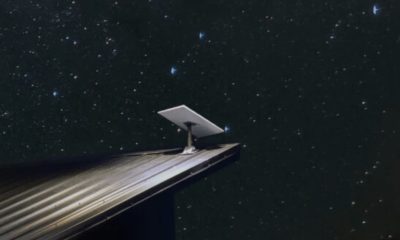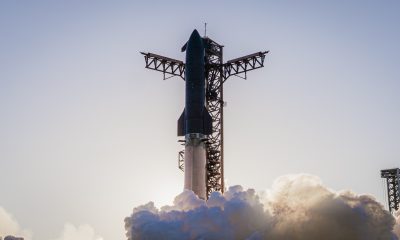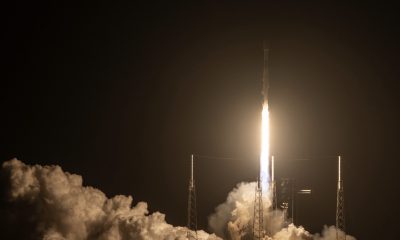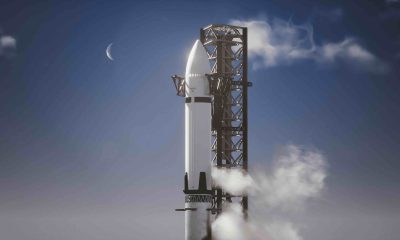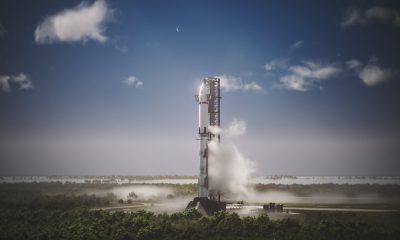SpaceX
Starlink shines in Spain & Portugal during historic blackout crisis

SpaceX’s Starlink saw an unprecedented demand in Spain and Portugal during a historic blackout, as mobile and internet users turned to the service amid widespread telecom disruptions.
The Iberian Peninsula’s power outage exposed vulnerabilities in traditional networks, driving a 35% surge in Starlink usage, with Spain recording a 60% increase above average by April 29, according to data analyzed by FT.
Ookla’s internet access analysis revealed record Starlink use, with thousands of users relying on the service. Traditional mobile coverage in Spain and Portugal faltered, with network consistency dropping to half its normal rate on April 28, as thousands of mobile antennas lost power.
“Too many people were trying to access too few resources. That’s why during the recovery phase it was hard to get connectivity stable,” said Claudio Fiandrino, a researcher at IMDEA Networks Institute in Madrid.
Vodafone España reported that backup generators activated at 70% of its sites, yet regions like Galicia and Murcia saw mobile traffic plummet to 20% by nightfall. Telefónica, prioritizing emergency services and hospitals, restored 95% of its network within 24 hours and full normality by May 1. Starlink’s coverage was strained by increased demand, but remained operational, connecting to ground stations in Italy when Spanish sites failed.
The blackout, the worst in Spain and Portugal’s history, saw 60% of Spain’s power demand vanish in seconds. Experts beclieve the historic blackout could be linked to the grid’s inability to handle excessive solar power.
Spain’s grid operator, Red Eléctrica, has not pinpointed the cause or outlined preventive measures. The incident has sparked calls for more resilient mobile networks in Spain.
Starlink’s reliability during the crisis underscores its growing role in bridging connectivity gaps. As Spain and Portugal recover, the blackout highlights the need for robust telecom infrastructure, with Starlink proving a critical lifeline when traditional networks falter.
Cybertruck
Tesla Cybertruck fleet takes over at SpaceX’s Starbase
Interestingly, the Cybertruck uses the same exterior, a stainless steel alloy, as SpaceX rockets. This synergy between the two companies and their very different products shows a very unified mentality between Musk companies.
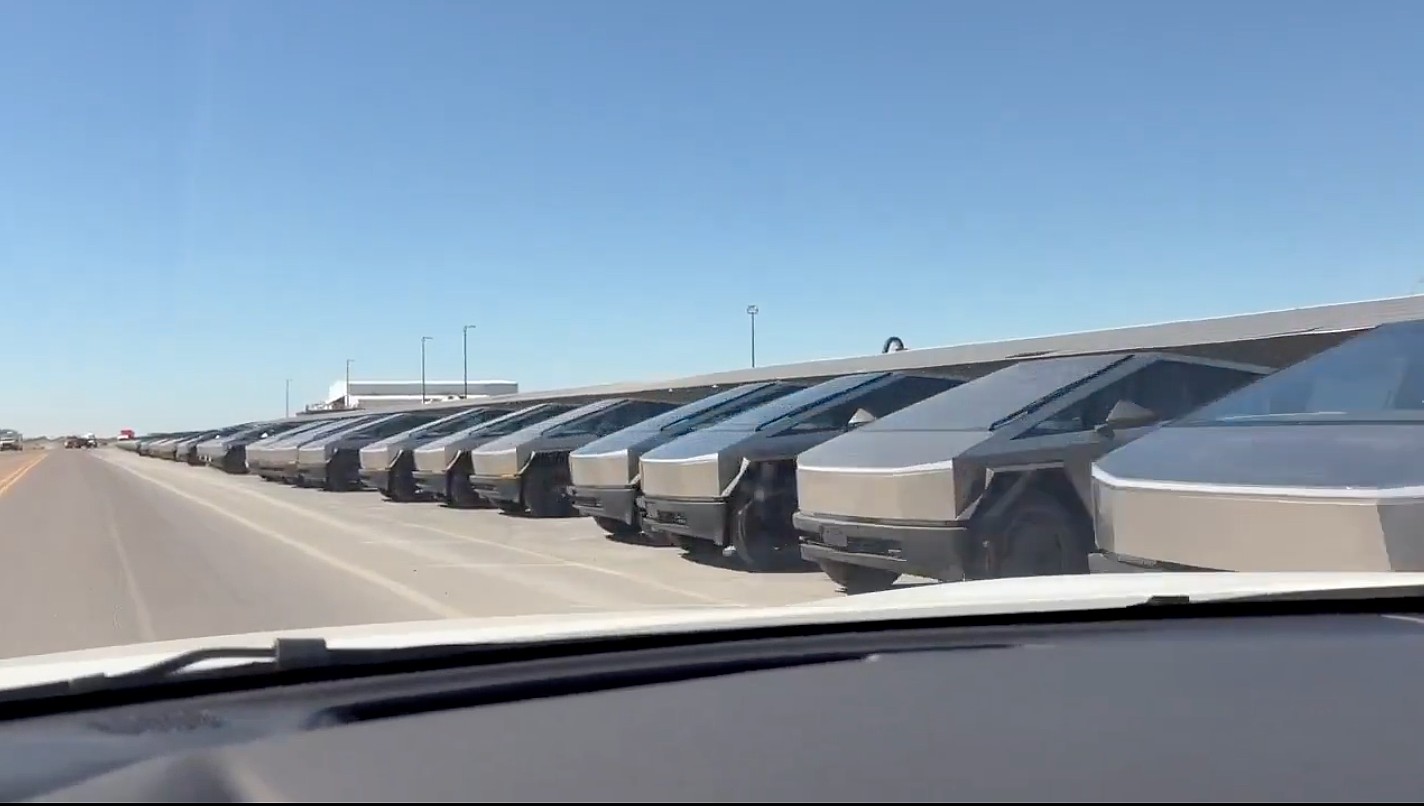
Tesla Cybertrucks have taken over at SpaceX’s Starbase facility in Texas, as hundreds of the all-electric pickup trucks were spotted late last week rounding out a massive fleet of vehicles.
The Cybertruck fleet is geared toward replacing gas vehicles that are used at Starbase for everyday operations. The only surprise about this is that it was not done sooner:
Was just visiting. pic.twitter.com/5Q9wPPaeuH
— Derek Li (@derek1ee) October 31, 2025
Deliveries have been going on for a few weeks, as Cybertrucks have made their way across the state of Texas from Austin to Starbase so they could be included in SpaceX’s fleet of vehicles at the facility.
Interestingly, the Cybertruck uses the same exterior, a stainless steel alloy, as SpaceX rockets. This synergy between the two companies and their very different products shows a very unified mentality between Musk companies.
However, there are some other perspectives to consider as SpaceX is utilizing such a massive fleet of Cybertrucks. Some media outlets (unsurprisingly) are seeing this as a move of weakness by both Tesla and SpaceX, as the aerospace company is, in a sense, “bailing out” lagging sales for the all-electric pickup.
It’s no secret that Tesla has struggled with the Cybertruck this year, and deliveries have been underwhelming in the sense that the company was anticipating between 1 million and 2 million orders for the vehicle before it was widely produced.
A lot of things changed with the Cybertruck between its 2019 unveiling and 2023 initial deliveries, most notably, price.
The price of the Cybertruck swelled significantly and priced out many of those who had pre-ordered it. Some have weighed the option of whether this purchase was a way to get rid of sitting inventory.
However, it seems more logical to consider the fact that SpaceX was likely always going to transition to Teslas for its fleet, especially at Starship, at some point.
It doesn’t seem out of the question that one Musk company would utilize another Musk company’s products, especially considering the Cybertruck has been teased as the vehicle that would be present on Mars.
News
SpaceX successfully launches 100th Starlink mission of 2025
With 100 Starlink missions completed for 2025, space enthusiasts have noted that SpaceX has successfully launched 2,554 Starlink satellites so far this year.
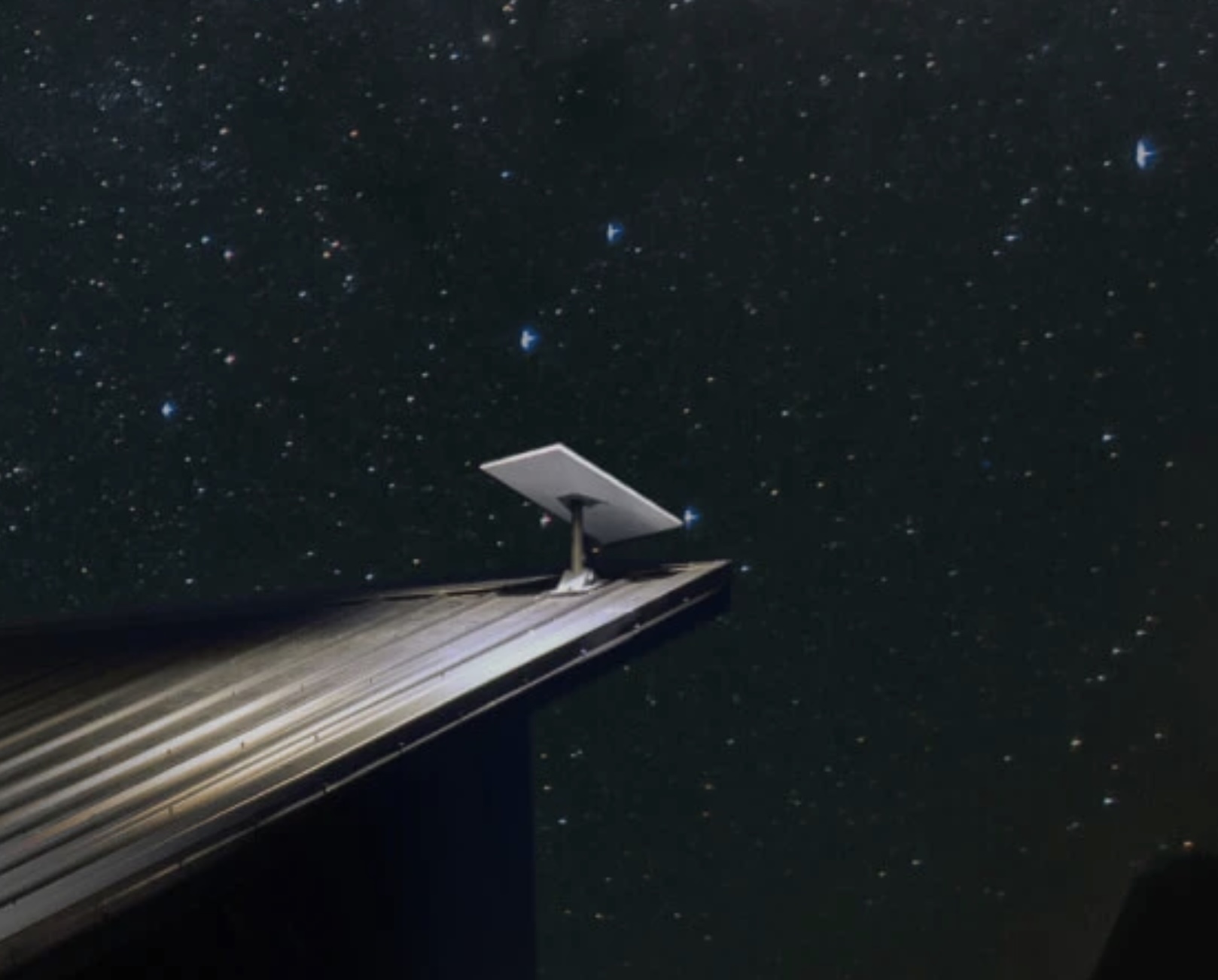
SpaceX achieved its 100th Starlink mission of the year on Friday, October 31, marking another milestone for 2025.
A Falcon 9 rocket carrying 28 Starlink broadband satellites successfully lifted off from Vandenberg Space Force Base in California at 4:41 p.m. ET, carrying another 28 Starlink satellites to Low Earth Orbit (LEO).
Falcon 9 booster’s 29th flight
Roughly 8.5 minutes after liftoff, the Falcon 9’s first stage touched down on the drone ship Of Course I Still Love You in the Pacific Ocean. This marked the booster’s 29th flight, which is approaching SpaceX’s reuse record of 31 missions.
This latest mission adds to SpaceX’s impressive 138 Falcon 9 launches in 2025, 99 of which were dedicated to Starlink, according to Space.com. The company’s focus on reusing boosters has enabled this breakneck pace, with multiple launches each week supporting both Starlink’s expansion and external customers.
Starlink’s network continues massive global expansion
Starlink remains the largest active satellite constellation in history, with more than 10,000 satellites launched, nearly 8,800 of which are currently active. SpaceX recently achieved Starlink’s 10,000-satellite milestone. With 100 Starlink missions completed for 2025, space enthusiasts have noted that SpaceX has successfully launched 2,554 Starlink satellites so far this year.
Starlink, which provides high-speed, low-latency internet connectivity even to the world’s most remote areas, has been proven to be life-changing technology for people across the globe. The service is currently operational in about 150 countries, and it currently has over 5 million subscribers worldwide. From this number, 2.7 million joined over the past year.
SpaceX
SpaceX checks off 49 lunar lander milestones in push toward Artemis III

SpaceX has revealed that it has completed 49 major milestones for NASA’s Human Landing System (HLS) program, marking significant progress in the development of the Starship lunar lander that will deliver astronauts to the Moon.
The updates were detailed in SpaceX’s new blog post To the Moon and Beyond, which was recently posted on the private space company’s official website.
As noted by SpaceX, the 49 milestones that were completed by its HLS team were “tied to developing the subsystems, infrastructure, and operations” needed to safely land humans back into the lunar surface. SpaceX noted that it has only received funding on contractual milestones that have been successfully completed, the vast majority of which have been achieved on time or ahead of schedule.
Following are highlights of SpaceX’s completed milestones, as per the company’s post.
For the first time in our existence, we possess the means, technology, and, for the moment, the will to establish a permanent human presence beyond Earth. Starship is designed to make this future a reality → https://t.co/dGAZiB4rr3 pic.twitter.com/WsTg44G3oz — SpaceX (@SpaceX) October 30, 2025
- Lunar environmental control and life support and thermal control system demonstrations, using a full-scale cabin module inhabited by multiple people to test the capability to inject oxygen and nitrogen into the cabin environment and accurately manage air distribution and sanitation, along with humidity and thermal control. The test series also measured the acoustic environments inside the cabin
- Docking adapter qualification of the docking system that will link Starship and Orion in space, an androgynous SpaceX docking system capable of serving as the active system or passive system and based on the flight-proven Dragon 2 active docking system
- Landing leg drop test of a full-scale article at flight energies onto simulated lunar regolith to verify system performance and to study foot-to-regolith interaction
- Raptor lunar landing throttle test demonstrating a representative thrust profile that would allow Starship to land on the lunar surface
- Micrometeoroid and orbital debris testing of shielding, insulation, and window panels, analyzing different material stackups that will be used to protect Starship from impact hazards and harsh thermal conditions
- Landing software, sensor, and radar demonstrations testing navigation and sensing hardware and software that will be used by Starship to locate and safely descend to a precise landing site on the Moon
- Software architecture review to define the schematic of major vehicle control processes, what physical computers they will run on, and software functions for critical systems like fault detection, caution and warning alerts, and command and telemetry control
- Raptor cold start demonstrations using both sea-level and vacuum-optimized Raptor engines that are pre-chilled prior to startup to simulate the thermal conditions experienced after an extended time in space
- Integrated lunar mission operations plan review, covering how SpaceX and NASA will conduct integrated operations, develop flight rules and crew procedures, and the high-level mission operation plan
- Depot power module demonstration, testing prototype electrical power generation and distribution systems planned to be used on the propellant depot variant of Starship
- Ground segment and radio frequency (RF) communications demonstration, testing the capability to send and receive RF communications between a flight-equivalent ground station and a flight-equivalent vehicle RF system
- Elevator and airlock demonstration, which was conducted in concert with Axiom to utilize flight-representative pressurized EVA suits, to practice full operation of the crew elevator which will be used to transfer crew and cargo between Starship and the lunar surface
- Medical system demonstration covering the crew medical system on Starship and the telemedicine capability between the ground and crew
- Hardware in the loop testbed activation for the propellant transfer flight test which uses a testbed with flight representative hardware to run simulations for the upcoming propellant transfer flight test
Ultimately, SpaceX’s message is clear. With its plans for a simplified architecture, the timeframe of the first crewed lunar landing of the current century could happen sooner than expected.
Musk definitely seems determined to prove skeptics wrong, with the CEO declaring on X that Starship will be the vehicle that would pave the way for the buildout of a base on the Moon. “Starship will build Moonbase Alpha,” Musk wrote.
-
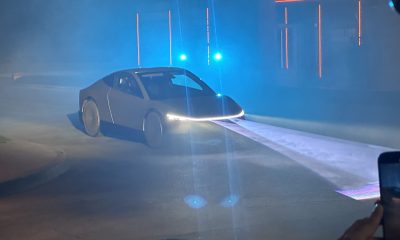
 News1 week ago
News1 week agoTesla Cybercab spotted testing on public roads for the first time
-

 Elon Musk6 days ago
Elon Musk6 days agoNeuralink’s first patient could receive an upgrade: Elon Musk
-

 News2 weeks ago
News2 weeks agoTesla ‘Mad Max’ gets its first bit of regulatory attention
-

 News2 weeks ago
News2 weeks agoTesla reveals its plans for Hardware 3 owners who are eager for updates
-
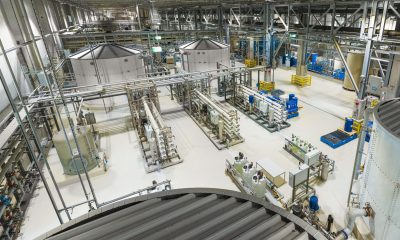
 News1 day ago
News1 day agoTesla Giga Berlin hits a sustainability milestone that’s so impressive, it sounds fake
-

 News7 days ago
News7 days agoNeuralink’s first human patient reflects on 21 months with brain implant “Eve”
-
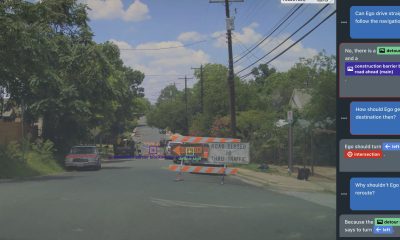
 News2 weeks ago
News2 weeks agoTesla VP explains why end-to-end AI is the future of self-driving
-
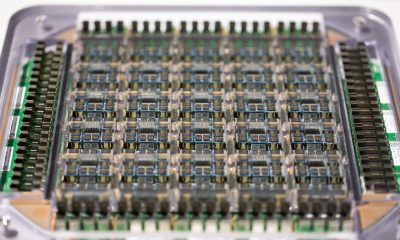
 News2 weeks ago
News2 weeks agoTesla shares AI5 chip’s ambitious production roadmap details




